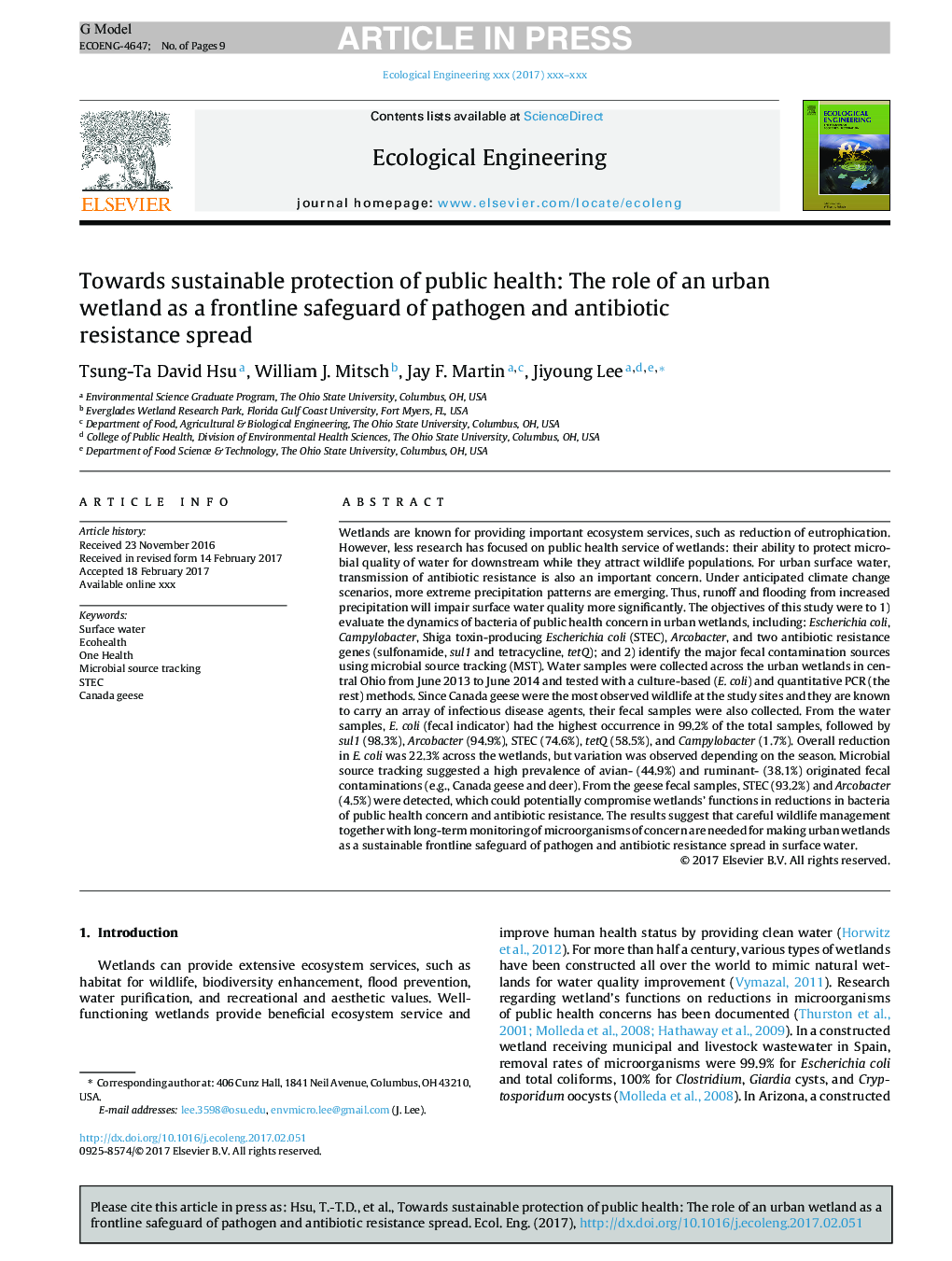| Article ID | Journal | Published Year | Pages | File Type |
|---|---|---|---|---|
| 8848205 | Ecological Engineering | 2017 | 9 Pages |
Abstract
Wetlands are known for providing important ecosystem services, such as reduction of eutrophication. However, less research has focused on public health service of wetlands: their ability to protect microbial quality of water for downstream while they attract wildlife populations. For urban surface water, transmission of antibiotic resistance is also an important concern. Under anticipated climate change scenarios, more extreme precipitation patterns are emerging. Thus, runoff and flooding from increased precipitation will impair surface water quality more significantly. The objectives of this study were to 1) evaluate the dynamics of bacteria of public health concern in urban wetlands, including: Escherichia coli, Campylobacter, Shiga toxin-producing Escherichia coli (STEC), Arcobacter, and two antibiotic resistance genes (sulfonamide, sul1 and tetracycline, tetQ); and 2) identify the major fecal contamination sources using microbial source tracking (MST). Water samples were collected across the urban wetlands in central Ohio from June 2013 to June 2014 and tested with a culture-based (E. coli) and quantitative PCR (the rest) methods. Since Canada geese were the most observed wildlife at the study sites and they are known to carry an array of infectious disease agents, their fecal samples were also collected. From the water samples, E. coli (fecal indicator) had the highest occurrence in 99.2% of the total samples, followed by sul1 (98.3%), Arcobacter (94.9%), STEC (74.6%), tetQ (58.5%), and Campylobacter (1.7%). Overall reduction in E. coli was 22.3% across the wetlands, but variation was observed depending on the season. Microbial source tracking suggested a high prevalence of avian- (44.9%) and ruminant- (38.1%) originated fecal contaminations (e.g., Canada geese and deer). From the geese fecal samples, STEC (93.2%) and Arcobacter (4.5%) were detected, which could potentially compromise wetlands' functions in reductions in bacteria of public health concern and antibiotic resistance. The results suggest that careful wildlife management together with long-term monitoring of microorganisms of concern are needed for making urban wetlands as a sustainable frontline safeguard of pathogen and antibiotic resistance spread in surface water.
Related Topics
Life Sciences
Agricultural and Biological Sciences
Ecology, Evolution, Behavior and Systematics
Authors
Tsung-Ta David Hsu, William J. Mitsch, Jay F. Martin, Jiyoung Lee,
